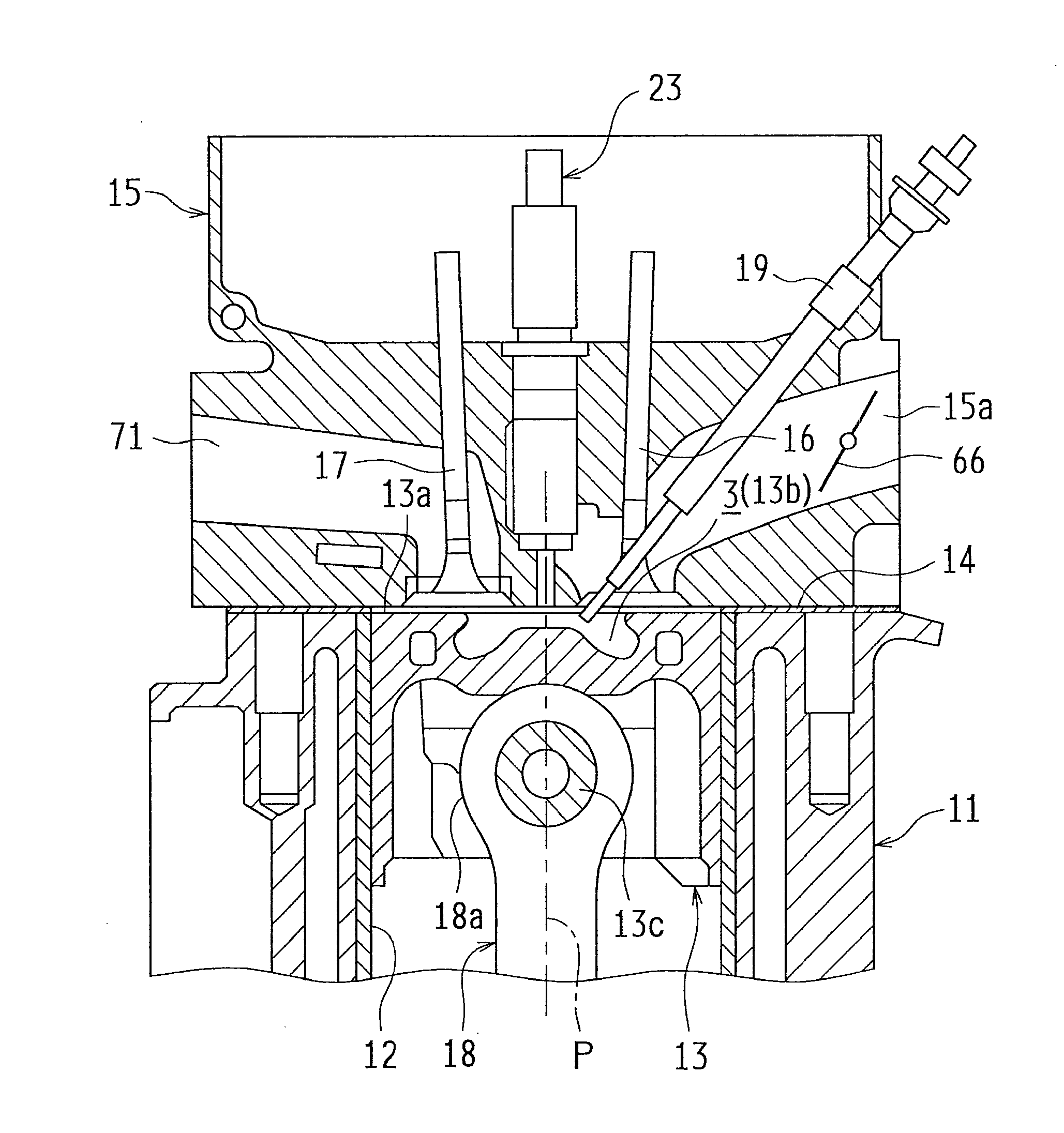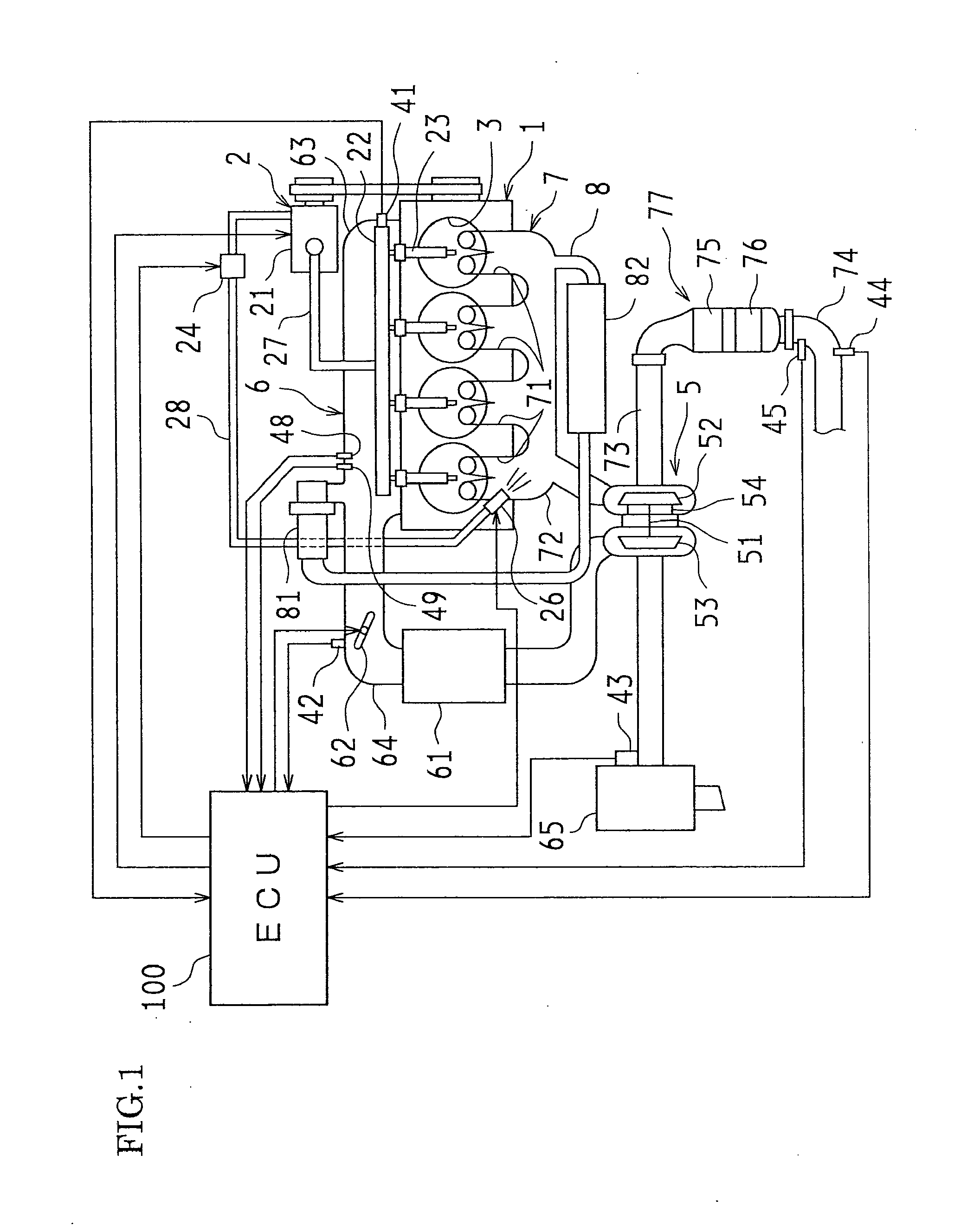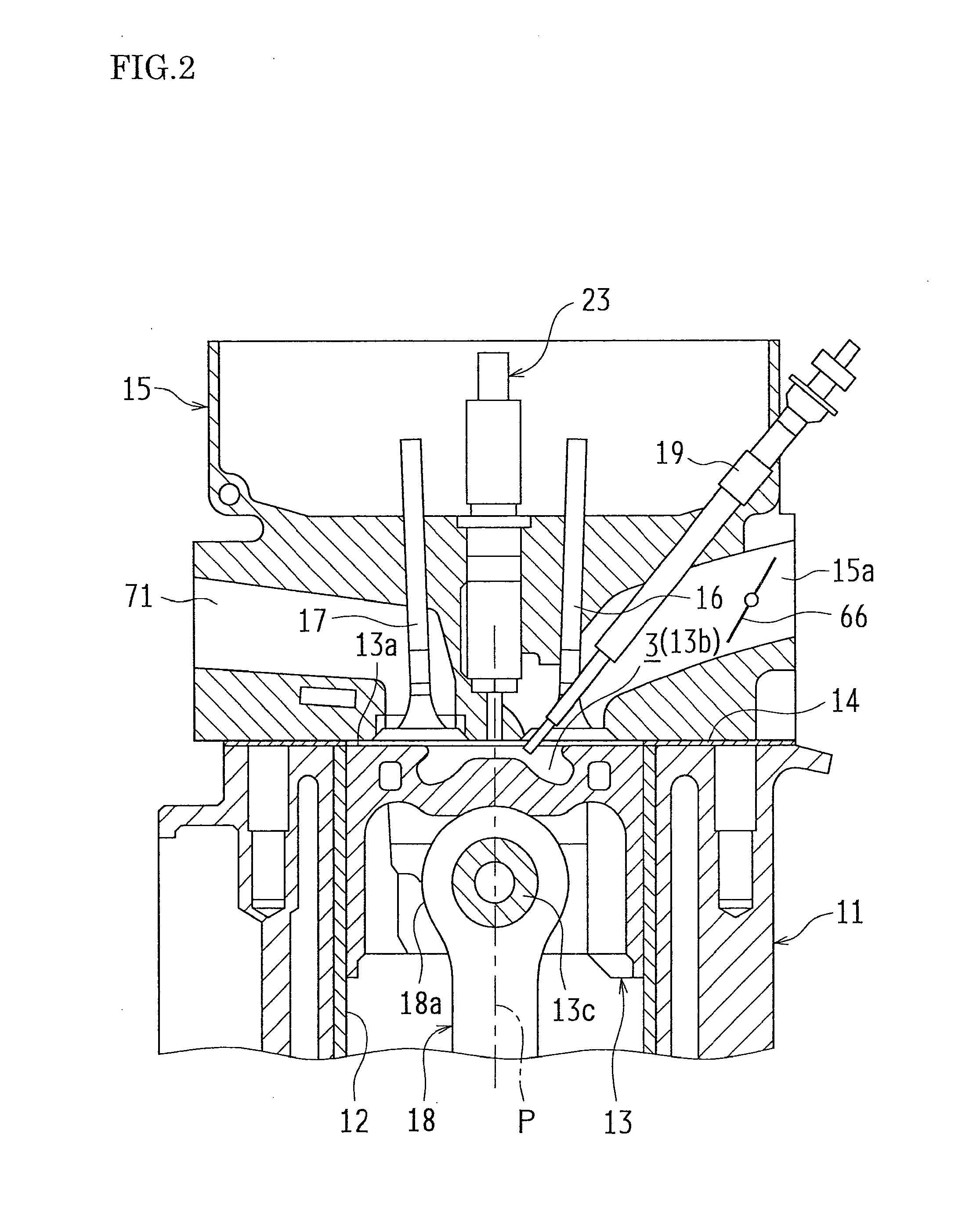Fuel injection control apparatus of internal combustion engine
a technology of control apparatus and internal combustion engine, which is applied in the direction of electrical control, process and machine control, etc., can solve the problems of further detriment to exhaust emissions, achieve the effects of reducing the negative workload of the compression process, reducing the temperature and pressure in the combustion field, and suppressing the amount of nox generation and smoke generation
- Summary
- Abstract
- Description
- Claims
- Application Information
AI Technical Summary
Benefits of technology
Problems solved by technology
Method used
Image
Examples
Embodiment Construction
[0045]Embodiments of the present invention will be described below by referring to the drawings.
[0046]In this embodiment, description will be given with regard to a case where the present invention is applied to a common rail in-cylinder direct injection multi-cylinder (for example, inline four-cylinder) diesel engine (compression self-igniting internal combustion engine) mounted in an automobile.
[0047]Engine Configuration
[0048]First, one example of a diesel engine (hereinafter referred to simply as an engine) to which the present invention is applied will be described. FIG. 1 is a schematic view of an engine 1 and its control system. FIG. 2 is a cross-sectional view of a combustion chamber 3 of the diesel engine and peripheral parts of the combustion chamber 3.
[0049]As shown in FIG. 1, the engine 1 of this example is configured as a diesel engine system including, as main units, a fuel supply system 2, combustion chambers 3, an intake system 6, and an exhaust system 7.
[0050]The fue...
PUM
 Login to View More
Login to View More Abstract
Description
Claims
Application Information
 Login to View More
Login to View More - R&D
- Intellectual Property
- Life Sciences
- Materials
- Tech Scout
- Unparalleled Data Quality
- Higher Quality Content
- 60% Fewer Hallucinations
Browse by: Latest US Patents, China's latest patents, Technical Efficacy Thesaurus, Application Domain, Technology Topic, Popular Technical Reports.
© 2025 PatSnap. All rights reserved.Legal|Privacy policy|Modern Slavery Act Transparency Statement|Sitemap|About US| Contact US: help@patsnap.com



